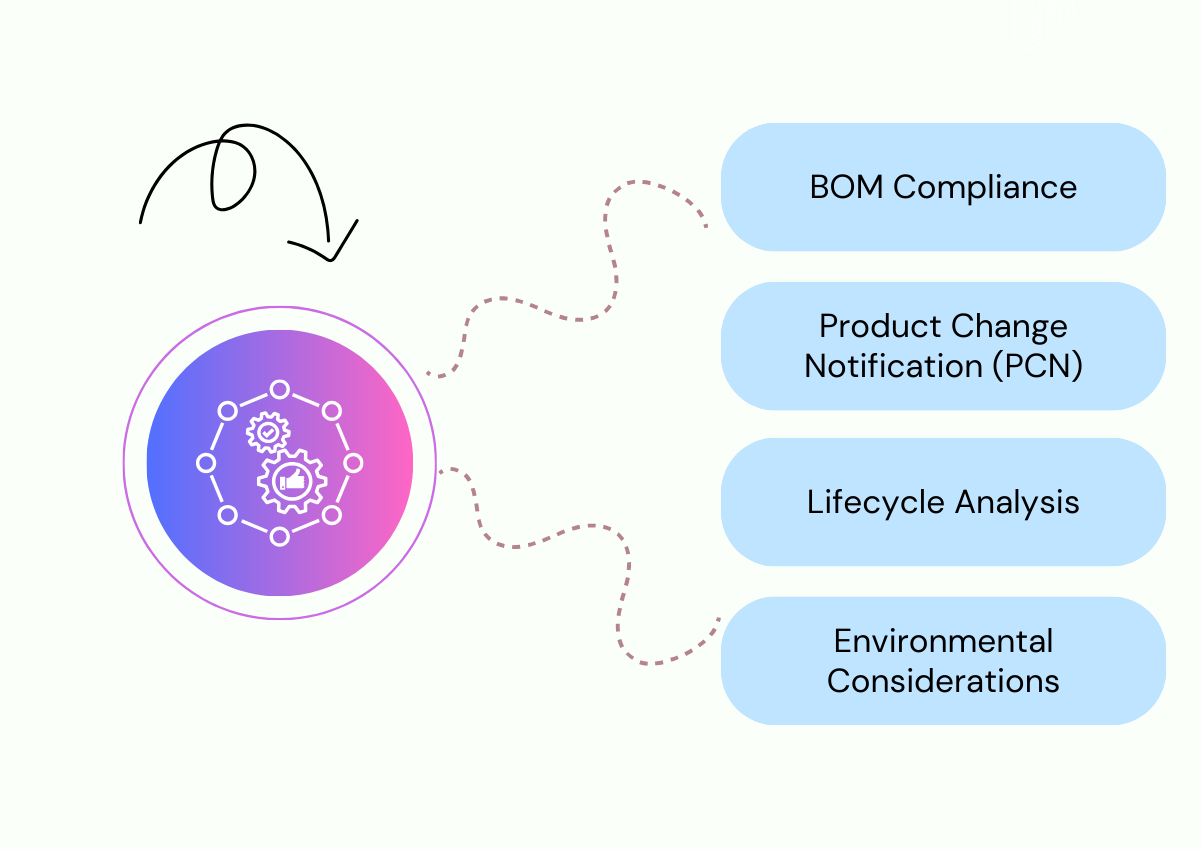BOM Creation and Structuring:
Creation of BOMs tailored to a product’s design, including all parts, subassemblies, materials, and components. Organizing BOMs into hierarchical levels (parent-child relationships) for complex products

Creation of BOMs tailored to a product’s design, including all parts, subassemblies, materials, and components. Organizing BOMs into hierarchical levels (parent-child relationships) for complex products
Identifying potential risks in the BOM (e.g., supply chain disruptions, obsolescence of parts, compatibility issues) and providing strategies to mitigate those risks.
Optimizing BOM structures by removing redundant components, simplifying part numbers, and reducing unnecessary subassemblies to improve production efficiency.

Tracking, creating PCN describing the changes implemented and collecting supporting documents from manufacturers such as updated specifications, drawings, BOMs (Bill of Materials), compliance certificates, or test results to ensure that stakeholders have all the necessary information to understand the change.
Analyzing the potential effects of the product change on manufacturing processes, production timelines, and resource allocation and evaluating how the change affects product quality and regulatory compliance (e.g., safety, environmental regulations).
Establishing a formal approval process for the PCN, ensuring that all changes are reviewed and authorized by relevant stakeholders (e.g., design engineers, product managers, quality assurance, and compliance officers) before being finalized. Maintaining a record of the PCN revisions and keeping track of any changes or updates to the original notice throughout the approval process.